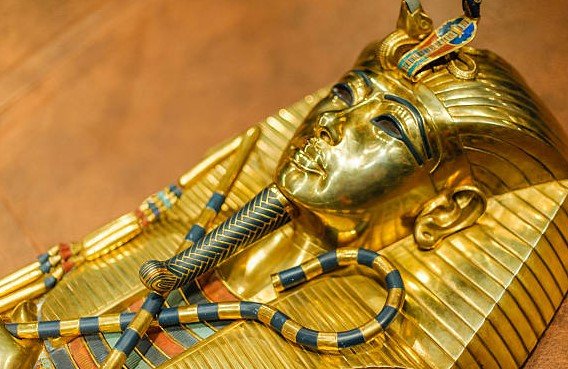Archaeologists have uncovered stunning artifacts from the ancient Egyptian port city of Canopus, submerged in the Mediterranean Sea off Egypt’s coast. These 2025 discoveries, including statues, a dock, and a merchant ship, offer fresh insights into this once-thriving hub of trade and culture before Alexandria rose to power.
Unearthing a Lost Port City
Divers and researchers pulled up remnants from the seabed near Alexandria this year, revealing parts of Canopus that sank centuries ago. The finds include stone statues and building fragments that paint a picture of a bustling city at the Nile Delta’s edge.
Experts say these items date back over 2,000 years, from the Ptolemaic era when Greek rulers controlled Egypt. The city served as a key trade center, linking Egypt to the Mediterranean world.
Rising sea levels and earthquakes doomed Canopus by the 8th century AD, burying it under water and silt. Recent efforts focused on Abu Qir Bay have brought these treasures to light, building on searches for famous tombs like those of Cleopatra and Alexander the Great.
Key Discoveries from the Depths
One standout find is a massive quartz sphinx with carvings linked to Pharaoh Ramesses II. This piece suggests Canopus held artifacts from even earlier Egyptian periods, showing its long history.
Teams also recovered a white marble statue of a Roman nobleman, pointing to the city’s wealth and mix of cultures under Roman rule after 30 BC.

Other items include Roman coins, tools, and parts of an ancient harbor. These reveal advanced shipbuilding and economic ties that made Canopus a powerhouse.
- Statues of gods like Serapis, some over 4 meters tall, highlight religious practices blending Greek and Egyptian beliefs.
- Merchant ship remains show how goods moved across the sea, from grains to luxury items.
- Anchors and jars from the Ptolemaic period confirm daily trade activities.
A merchant ship fragment offers clues on construction techniques, with preserved wood despite centuries underwater.
Historical Importance of Canopus
Canopus sat on the western bank of the Nile’s mouth, opposite its twin city Thonis-Heracleion. Founded before Greek arrival, it grew into a vital port by the 6th century BC, as noted in ancient poems.
Under the Ptolemies, it became a center for trade, military, and festivals, earning a reputation as a “party town” with grand temples and multicultural vibes.
The city’s decline started with Alexandria’s founding in the 4th century BC, but it thrived for centuries more. Environmental changes, like soil liquefaction from earthquakes, led to its submersion.
Recent studies link these finds to broader Nile Delta shifts, where rising waters claimed several settlements.
Groundbreaking Stele Find on Land
Beyond underwater efforts, archaeologists in Egypt’s Sharqia Governorate unearthed a complete sandstone stele this month. This slab is a new copy of the Canopus Decree from 238 BC, issued by King Ptolemy III.
The decree honored priests and set religious rules, similar to the Rosetta Stone in its bilingual text. It’s the largest such find in over 150 years, providing fresh details on Ptolemaic governance.
Experts call it Egypt’s “new Rosetta Stone” for its potential to decode more about the era. The stele measures about 2 meters high and features hieroglyphs, demotic, and Greek scripts.
This land discovery complements sea finds, showing Canopus’s influence extended inland.
What These Finds Mean Today
These artifacts reshape our view of ancient Egypt’s economy and society. They show Canopus as a melting pot where Greek, Egyptian, and Roman worlds met, driving innovation in art and trade.
Preservation challenges remain, as items like wood need quick treatment to avoid decay once exposed. International teams, including from the University of Bristol, are involved in analysis.
The discoveries fuel tourism and research, with some items now displayed at the Alexandria National Museum. They also highlight climate risks, echoing modern sea-level threats to coastal sites.
| Artifact Type | Description | Historical Period | Significance |
|---|---|---|---|
| Quartz Sphinx | Large statue with Ramesses II cartouches | 13th century BC (reused) | Links Canopus to pharaonic eras |
| Roman Nobleman Statue | White marble figure | Roman era (after 30 BC) | Shows multicultural wealth |
| Merchant Ship Remains | Wooden hull fragments | Ptolemaic period | Reveals shipbuilding and trade methods |
| Canopus Decree Stele | Sandstone slab with inscriptions | 238 BC | Provides governance and religious insights |
| God Serapis Statue | Over 4 meters tall | 200 BC | Blends Greek-Egyptian religion |
Future Explorations and Global Interest
Ongoing dives promise more revelations, with technology like sonar mapping new areas. Links to nearby sites, like Taposiris Magna temple, suggest undiscovered tunnels and ports.
These finds spark global excitement, from social media buzz to museum exhibits. They remind us of Egypt’s rich past and the need to protect underwater heritage.
What do you think about these ancient treasures? Share your thoughts in the comments and spread the word to fellow history fans.
